I believe this interaction was a territorial display between two Northern Flickers. Their routine was on a continuous loop for about five minutes, performed on utility cables strung across our view of the city.
Aggressive displays such as “bill directing” or “bill poking” are used by flickers. That is, a flicker may point his bill at a rival with his head inclined forward, or actually peck at an opponent. A more aggressive display is “head swinging,” whereby a flicker will use side-to-side movements of his head and body against an opponent. There is also a “head bobbing” display that may be used. Sometimes tail spreading accompanies head swinging or bobbing displays (Short 1982, Bent 1992).
From Animal Diversity Web
I shot the scene in near silhouette on a rainy day, with too slow a shutter, and with intense backlight diffused through clouds. I got creative with a few Lightroom controls and Nik Color Efex … just to squeeze a bit of life from otherwise dull and distant images of this animated exchange.
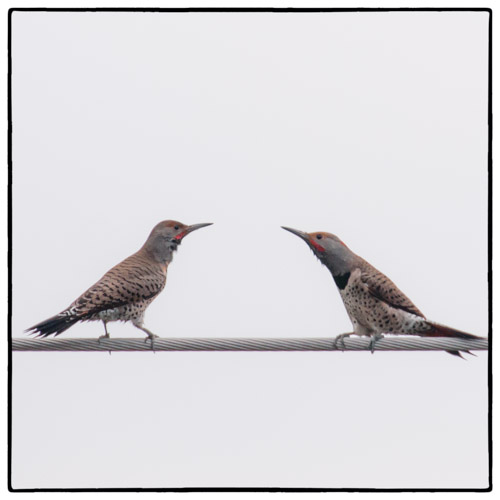
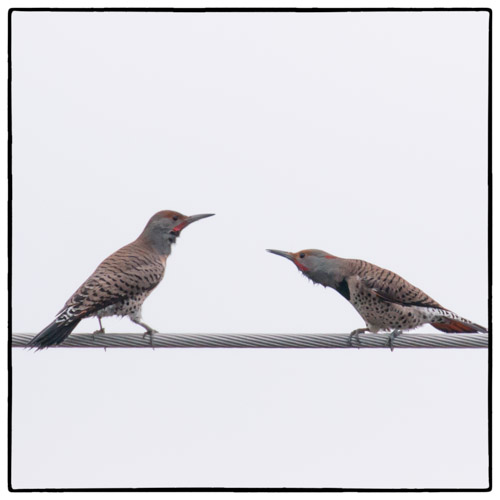
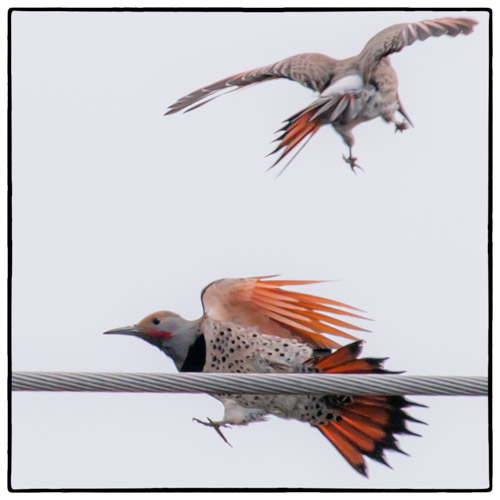
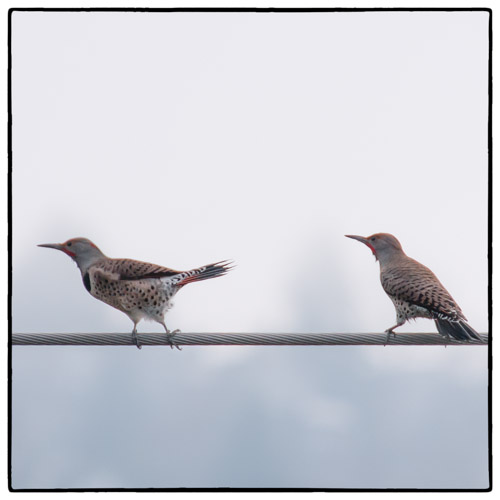
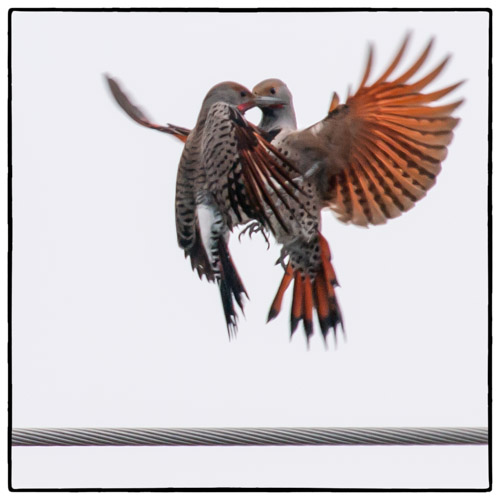

I would feel lucky just to get any shot of a flicker. They are hard to find here in SF.
Glenn, I know. I couldn’t believe how many I saw when we first moved up here. They’re everywhere. They often forage in pavement cracks, so I frequently see them rooting around in driveways. I never grow tired of the sightings.
I like the sequence. I knew the Northern Flicker was colourful, but underneath those wings lies a visual treat.
Maria, I also didn’t realize how colorful until I saw the plumage backlit in that way. I usually just see flashes of color as they take off.
Wonderful shots !! Excellent photo study for an underappreciated beautiful bird species.
True, John, and that under-appreciation is regional, too. I rarely saw Flickers back home, so they’re still a real visual treat for me. I love their plumage, their behavior, and their calls. Another example, I get excited now, when I see a Scrub Jay … the jays so common around the Bay Area but not so much here. We had quite a few resident Scrub Jays who lived around our garden back home, and now it’s the Steller’s Jays. Here in the Northwest, I see tons of Barrows Goldeneyes, remembering the one Barrows who got a lot of attention at an urban refuge back home because he wasn’t a Common Goldeneye.
This is so neat!! I have been paying attention to flickers lately. Interesting things going on with this species. One thing I noticed with your photos. One of the males has a nuchal patch! This is known to be a yellow-shafted trait. I am beginning to think this ID tip should be more comprehensively researched. I have seen it quite a bit in red-shafted flickers lately, and might not be a trait for intergradation. Ok, I am really nerdy about this stuff, but I thought it was neat….
I love your site by the way.
B, I saw that and didn’t know what to make of it. Thank you for adding an element of explanation and rumination. I’m going to research it a bit now, following from your nerdy observations which I relate to. I’m geeky … but just not as informed on those vitals and stats. Much appreciated!